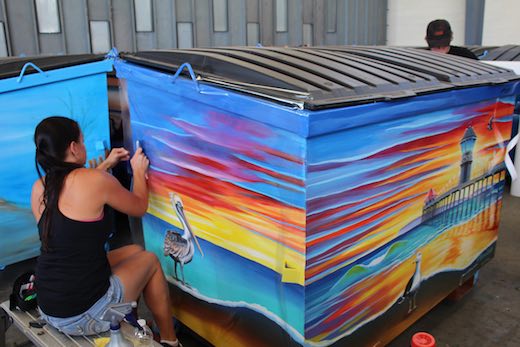Four Considerations When Choosing a Digital Overlaminate
Press release from the issuing company
By Joey Heiob, Avery Dennison Graphics Solutions, Technical Service Representative
When it comes time to convert a digitally printed graphic, one of the most critical decisions is which clear laminate to use. In today's world, converters have many options to choose from, and these can be good and bad. There are many factors to consider when choosing the best laminate for a graphic installation. Here are some things a converter must consider in the decision-making process to ensure the best laminate is being used:
1.) What is the actual application the graphic will be used for? Is this a fleet graphic, POP signage, interior/exterior architecture, floor graphic, or something else?
2.) How long is the end user expecting or wanting the graphic to last?
3.) What finish does the customer want (gloss/luster or matte)?
4.) If this graphic will be installed outdoors, in what region of the country, and will this be a vertical or horizontal facing graphic?
Knowing what the end use application is will help to narrow down the decision among all the choices on the market today. For fleet graphics or vehicle wraps, you’re going to be using a cast laminate 95% of the time. Cast laminates are more durable than calendar laminates and provide the conformability these substrates require, which a calendar laminate also does not provide.
Another option that is fairly new to the market is urethane laminates. These are non-PVC products that are highly conformable and more durable than traditional PVC-based laminates. They typically provide not only great vertical application protection but also are the only laminates on the market today that provide horizontal application durability.
Traditional calendar laminates are used for flat signage such as POP, interior architectural graphics, and interior floor graphics. These types of laminates are generally shorter in durability statements and have limited conformability capabilities.
When you're finding out what the customer’s expectations are when it comes to how long they want the graphics to last you have to consider many factors. Is this graphic going to be interior or exterior? If the graphic is going to be exterior you have to know what region of the country it will be serviced in. Outdoor graphics serviced in Ohio are not exposed to the same year-round harsh elements as an exterior graphic in Arizona.
Another major factor to know for exterior graphics is if they are applied to a vertical substrate or a horizontal substrate. Unless you're using a urethane laminate you need to educate your end user that horizontal applications come with no expected durability guarantee from any of the film manufacturers. These types of exterior applications are getting exposed to the brunt of Mother Nature so they typically will not last as long as a vertically applied graphic.
If the graphic is going to be applied to an interior surface you need to know exactly what that surface will be. If it’s smooth/flat you can probably go with a calendar option laminate, but if the surface is textured or has any compound curves you’ll need to go with a cast laminate.
There are different finished laminates on the market a converter can choose from as well. Most popular are gloss finishes. These types of laminates provide the best color pop for digitally printed graphics. They can provide a paint-like finish in automotive applications. These laminates are easier to clean and maintain for the life of the graphic.
Converters can also choose from satin/luster finishes or matte finish laminates. These finishes are great for interior applied graphics as they reduce the glare of the interior lighting. One big caution that the converter must educate the end user on is that matte finish laminates are much tougher to keep clean and maintain. These laminates are more porous compared to a gloss laminate, so stains or dirt can be much tougher to clean and remove as they can soak into the face.
It’s all about asking all the right questions. By doing your full due diligence you will help your customers decide on the best laminate to use for the job you're doing!

Clear laminates offer durability and protection for graphics. An anti-graffiti overlaminate, like Avery Dennison DOL 6060 featured here, keeps the integrity of the sign and color intact, while delivering protection from uninvited damage. Photo courtesy of Avery Dennison Graphics Solutions.
- Questions to ask about inkjet for corrugated packaging
- Can Chinese OEMs challenge Western manufacturers?
- The #1 Question When Selling Inkjet
- Integrator perspective on Konica Minolta printheads
- Surfing the Waves of Inkjet
- Kyocera Nixka talks inkjet integration trends
- B2B Customer Tours
- Keeping Inkjet Tickled Pink
© 2024 WhatTheyThink. All Rights Reserved.














